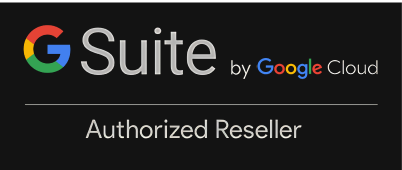How to Use Online Reviews
Online reviews are credible sources of information that can heavily influence consumer behaviours. In fact, according to a recent study by Podium, online reviews impact purchasing decisions for 93% of consumers. A review can be the difference between a conversion and a dead end, so the stakes are high.
The only legitimate way to gather positive online reviews is to deliver a quality product or service. Businesses have no control over what people say about them online. This is because customers can use external platforms to share their experiences. While you can hide reviews from your website, you can’t hide them from Trust Pilot, Google or social media.
Good reviews are like gold dust. Once you’ve collected a few, they can almost certainly be monetised. Here are Elephant in the Boardroom’s expert tips on how to use them to your advantage.
1. Feature good reviews on your website
Your website is your digital shopfront and the face of your brand. For many consumers, it will be their first impression of your business, so make it count. One way to instantly establish credibility is by displaying reviews conspicuously on your site. They add a layer of legitimacy to your brand, encouraging visitors to trust your promises. As well as building consumer confidence, having reviews on your website also boosts SEO rankings.
Because you have autonomy over what goes on your website, you can cherry pick the best reviews to post. How and where you display them will depend on your web design. If you regularly update your site, you could display one per week in the header. Another idea is to list a few in the sidebar. If you have an online store, you can display them beside the corresponding products.
Regardless of where you put them, there are a few general guidelines to follow when it comes to sharing online reviews on your company website.
Make sure they’re visible. Good reviews are too valuable to be buried away. Flaunt them shamelessly at every opportunity. Customers shouldn’t have to look very hard on your website to find them. Try and display them somewhere on your landing page, in a format that suits your design. Use striking colours and graphics to draw the viewers’ attention towards them.
Include a quantitative and qualitative element. The best online review formats tend to use both. Quantitative reviews are more of a big picture, general evaluation. Star ratings are a common example. Qualitative reviews, on the other hand, provide specific details. They allow customers to share their experiences and can help visitors to decide whether the product/service is a good individual fit. Try to urge your clients to share comments, rather than simply rate the product/service out of five.
Steer clear of fake reviews. Unfortunately, they do exist. In a desperate bid to boost credibility, many businesses have resorted to false reviews. These can either be paid for via a third party, or written in-house. Don’t underestimate how savvy consumers are these days. Fake reviews are generally easy to spot. If something seems too good to be true, it generally is. Not to mention, fake reviews are illegal, so by engaging in this activity you’re risking trouble with the law if caught.
Allow customers to evaluate reviews. We recommend using a mechanism that allows customers to rate the quality of reviews. For example, you could include a button for users to click if they found reviews “helpful” or “unhelpful”. This helps to separate credible, well-written reviews from those are that inaccurate or misleading. This simple feature helps to streamline and optimise the review system, so it’s worth including.
Make it easy for others to post reviews. The more reviews you collect, the better. Therefore, it’s important to prompt customers to write them. Give them multiple opportunities to post reviews at different stages. One effective tactic is to send a follow-up email to customers a couple of weeks post purchase, inviting them to write a review. You could also offer an incentive if you need to increase the number of reviews on your site, e.g. a small discount or an entry into a giveaway.
2. Use email & messenger marketing
Email marketing is an old school yet highly effective digital marketing tactic. Promotional emails still have a high open rate among their mailing lists. This makes them a great home for online reviews and testimonials.
Messenger marketing is a more modern version of email marketing. It uses mobile chat apps to reach prospective customers. Facebook has an enormous userbase, so it makes sense to tap into it. To accumulate leads on Messenger, all you have to do is create a decent call to action for a user to click on. From there, you can send them marketing material that includes reviews and testimonials.
3. Use Google’s review features
If you search a business on Google, the results will usually feature reviews alongside other details. If you want your business to be displayed as such, sign up for Google My Business. This is a free tool that improves your visibility in search results. It provides a short summary of your business by displaying your location, information and reviews all in one place.
Google Ads, the search giant’s pay-per-click advertising service, has a feature called the seller ratings extension. This allows you to showcase your reviews in ads that appear on the search results pages for keyphrases relevant to your business.
4. Embrace negative reviews
Nobody likes to be criticised, especially in public for everybody to see. However, negative online reviews are part and parcel of conducting business. Rather than looking at reviews as an attack, use them as constructive feedback. Pay close attention to them, and if you notice a pattern, see how you can improve on the issue. Sometimes, you can turn things around by responding to negative reviews. The way you handle them says a lot about your brand, so be prudent. Always be professional in your tone. Even if it means biting your tongue, avoid retaliation all costs. You want to curate an image of a business that cares about its customers and takes feedback on board. In certain cases, it may be appropriate to write a blog post addressing a recurring criticism. If a customer has had a particularly bad experience, try to reach out to them directly and offer them a refund or a future discount.
Online reviews are not just a powerful advertising tool. They are also highly valuable resources that allow businesses to understand how customers perceive them. Businesses should always have their fingers to the pulse of their audience. To do so, they must monitor reviews and practice social listening regularly. This indirect feedback contains rich insights which should be analysed and acted upon accordingly. Reading online reviews is, in many ways, the most worthwhile research a company can undertake.
If you need help building your online presence, let the experts step in. The team at Elephant in the Boardroom are passionate about all things digital, from SEO to graphic design. Get in touch today at www.elephantintheboardroom.com.au.





















